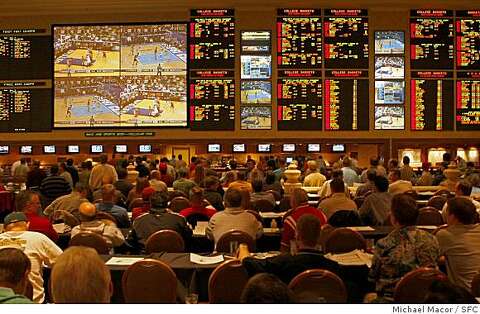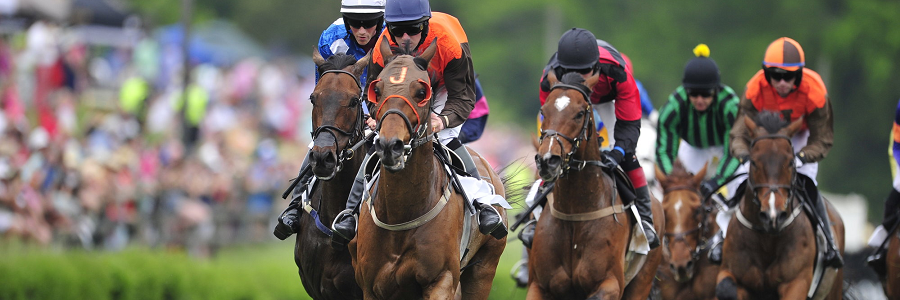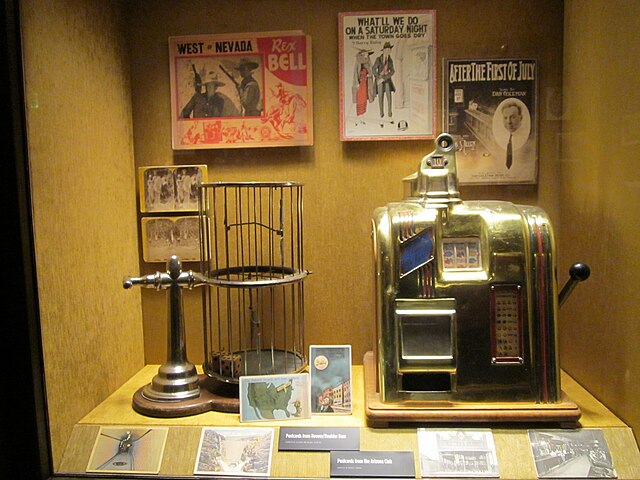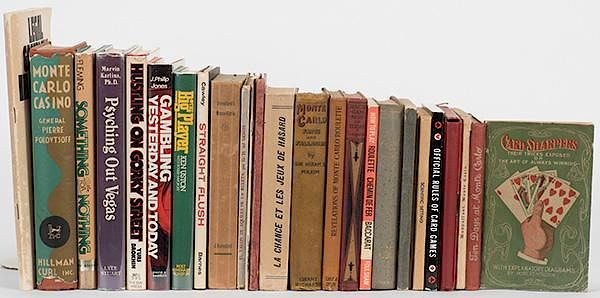Quote: charliepatrickOnce you're 6 or higher you can make any multiple of 3 using boxes of 6 or 9.
Thus all numbers >3 of the form 0 + 3n can be made.
You can make 20, then 26 and so can make all the numbers >23 of the form 20 + 3n (which is the same as 3n + 2).
You can make 40, then 46 and so can make all then numbers >43 of the form 40 + 3n (which is the same as 3n +1).
So once you've got to 46 you can make all the numbers as they will be one of 3n, 3n+1, 3n+2..
Counting back 45 can be made from boxes of 9, 44 can be 20 + boxes of 6, and 43 cannot be made (as it is 3n+1).
Time to open my bottle of wine - https://www.vintagewineandport.co.uk/vintage-wine/1943-wine !
Winner! Winner! McChicken Dinner!!
CP is spot on.
------------------------------------------
Equation Enigma
It appears the max number won't matter with this group since the top bid is north of 100 McNuggets. At first you watch the spectacle somewhat fascinated. As the count getting shoved into mouth reaches the 70s, however, you start to feel a little queasy and decide to move on.
You enter the sportsbook and grab an empty chair in back. On the table in front of you is a piece of scratch paper with the equation 101 - 102 = 1 written on it. Presumably someone was calculating a basketball point spread and got the math wrong. You reach for the paper to crumble it up and then pause. It occurs to you that you can make the equation correct by simply moving one of the numbers.
How can you correct the equation 101 - 102 = 1 by moving just one numeral?

Quote: charliepatrickI don't know if it counts but if you move the - to make 101 = 102 - 1. The word "numeral" also means symbol, so you've moved a negative symbol.
Quote: GialmereVery clever CP although you're actually swapping 2 symbols. For this riddle, define "numeral" as a "symbol denoting a number" so only a number may be moved. Your lateral thinking, however, is needed to solve.
10 - 102 ≠1
Quote: charliepatrickQuote: GialmereVery clever CP although you're actually swapping 2 symbols. For this riddle, define "numeral" as a "symbol denoting a number" so only a number may be moved. Your lateral thinking, however, is needed to solve.101 - 10 squared = 1; so change the 2 to a smaller 2 i.e. 10^2
Oh, of course! I was so close to seeing this. I think the word "move" got in my way, thinking laterally, not in nomenclature.. Good job!
Quote: charliepatrick101 - 10 squared = 1; so change the 2 to a smaller 2 i.e. 10^2
Winner! Winner! Chicken Dinner!!
----------------------------------
/pic5063607.png)
Plate Problem
Uh oh! A TV screen in the sportsbook is showing a recap of the World Series and a replay of a called strike three has started an argument between two baseball fanatics. At first they argue about whether it was a good or bad call. Somehow this leads to them arguing about the size of home plate itself. One fan (evidently a rules junkie) declares that home plate is a 17 inch square with 8½ inch sides and the back two corners are cut off at 45° angles so that they form 12 inch sides that connect at a 90° angle where the foul lines meet.
Hmm, you have no intention of inserting yourself into an argument between two drunken gamblers, but is this statement true? You've never really though about home plate before and since you happen to have some time and scratch paper you decide to find out. The 17 inch width would have to be true and thus the two 8½ inch sides (being half of 17) would also be correct. What about the 12 inch sides? You figure out how to calculate their lengths and conclude that...
a) Yes. They are exactly 12 inches long.
b) No. They are slightly shorter than 12 inches.
c) No. They are slightly longer than 12 inches.
/pic5063561.png)
Quote: unJonToo easy on a site like this!
The back of home plate makes two right isosceles triangles with 8.5” sides. The hypotenuse is 8.5 times the square root of 2, or very slightly longer than 12” at 12.0208153
Winner! Winner! Chicken Dinner!!
[Incidentally, Heather Ferris (from a few riddles ago) has released her first video from this year's Cutting Edge event. It looks at a table game called Grand Slam Casino Baseball. I noticed that the placement of home plate on the layout is incorrect but only because I was working on this post.]
-------------------------------------

Pony Purchase
Oh well. The argument between the drunken baseball fanatics escalates into a fist fight. You head to the other end of the sportsbook as security rushes in to (somewhat ironically) throw the bums out. You now find yourself among the horse handicappers. You pick up a form and start reading an article ranking new horses that'll be appearing at Santa Anita when the new season begins next month, their speed and endurance etc. What was racing like in the old days before touts could clock a horse with their cellphones and send the information anywhere in the world? You sit down and start to daydream...
You imagine yourself as a wealthy landowner in ancient Greece and have decided to open your own stable to race horses at the local hippodrome. You've already built a practice track at your villa capable of racing five horses at a time. (In a bizarre moment of future foresight you named the track Sigma Derby.) One day a merchant arrives with twenty five fine looking horses for your perusal. You decide to purchase the fastest three in the group. But how do you determine which three are the fastest? Obviously you need to race them off against each other on your five-horse track but you have other commitments and don't want to take forever.
What is the MINIMUM number of races you'll need to run to find the three fastest horses and what sequence of races will you use?

Quote: charliepatrickI knew I'd seen this puzzle before as I came third when it appeared here...
Forgive me. I'm still in my rookie year here.
Quote: charliepatrickI knew I'd seen this puzzle before as I came third when it appeared here - https://wizardofvegas.com/forum/questions-and-answers/math/29023-25-horses-puzzle/3/ That thread also included a reference to a nice site with other puzzles including this one - http://puzzles.nigelcoldwell.co.uk/fiftynine.htm
I think a key thing to remember is if you know an elephant is bigger than an apple, and that a cat is bigger than an orange comparing an elephant to a cat tells you nothing about how an apple compares to an orange.
Quote: charliepatrickSeven races.
I think this is the solution that has already been found, but this is how I did it.
Run five heats (a) thru (e) and assume you get horses A1-A2-A3-A4-A5 thru E1-E2-E3-E4-E5.
Sixth heat is the winners A1-B1-C1-D1-E1 (and assume A beats B beats C etc).
At this stage the winning horse is A1.
The second fastest horse is either B1 or A2.
The third fastest horse is either one of the above or A3 or B2.
So run A2 A3 B1 B2 C1 to determine second and third.
A1 > B1 > C1
/ /
A2 B2
|
A3
It could be A1 A2 A3, A1 A2 B1, A1 B1 A2, A1 B1 B2, A1 B1 C1 - the last race determines which.
▀ ▀ ▀ ▀ ▀ ▀ ▀ ▀ ▀ ▀ ▀ ▀ ▀ ▀ ▀ ▀ ▀ ▀ ▀ ▀ ▀ ▀ ▀ ▀

Casino Clock
You exit the sportsbook and find yourself in a back corner of the casino. Tucked away here are a few exhibits of old gambling devices.
One interesting item is an odd clock dated a little over 80 years old. It seems that when gambling was reinstated in Nevada one town required any casino to conspicuously display the time of day for all gamblers to see. Spotting a loophole in the ordinance (and hoping to keep its customers at the tables), one casino had a special clock made.
The clock had no numbers on it and the hour, minute and second hands were all exactly the same size and shape. Clever. Unfortunately the clock is now broken--its hands frozen in time forever--so it's impossible to tell which hand is which and what orientation puts 12 o'clock at the top. Or is it?
Looking at it, can you figure out what time it was when the clock died?
/pic5077625.png)
I think the time was 10:00:24 when it stopped.
The two hands pointing towards a bold tick are both just slightly right of center. The 3rd one, that's not on a bold tick, can't be the hour hand approaching 12, because neither of the others can be the minute hand for sure, and that makes the problem unsolvable. Both could move the 10 ticks needed for the 3rd one to reach 12, and it would be either 7:00 or 9:00 when they did.
So, it's just seconds after the hour has struck, and the question is how many. If it's less than half a minute, it's reasonable for the minute hand not to have advanced much at all. If it's more than half a minute, I would expect the minute hand to have moved more than either hand has yet.
So, with it either 2:00:34 or 10:00:24, I select the latter.
If I got this right, it's because I was a habitual clock-watcher in boring classes, back when we had mechanical clocks and the minute hand would jump at about the 30 second mark.
Quote: beachbumbabs
I think the time was 10:00:24 when it stopped.
The two hands pointing towards a bold tick are both just slightly right of center. The 3rd one, that's not on a bold tick, can't be the hour hand approaching 12, because neither of the others can be the minute hand for sure, and that makes the problem unsolvable. Both could move the 10 ticks needed for the 3rd one to reach 12, and it would be either 7:00 or 9:00 when they did.
So, it's just seconds after the hour has struck, and the question is how many. If it's less than half a minute, it's reasonable for the minute hand not to have advanced much at all. If it's more than half a minute, I would expect the minute hand to have moved more than either hand has yet.
So, with it either 2:00:34 or 10:00:24, I select the latter.
If I got this right, it's because I was a habitual clock-watcher in boring classes, back when we had mechanical clocks and the minute hand would jump at about the 30 second mark.
Sorry Babs. I guess you paid more attention in class than you give yourself credit for.
Quote: Gialmere...
...The hands pointed at major marks are dead on.
For the minute to be spot on, the seconds would have to be at 0 (i.e. at the 12 o'clock position).
With (i) this would mean either 10 past an hour or 10 to an hour.
With (ii) If the second were spot on, then the minute should point exactly to a tick mark, but the third hand doesn't - so this option is impossibble.
With (iii) Although it might be possible for the time to be something and 59.2 seconds, the minute hand wouldn't technically be bang on. Nevertheless the minutes wouldn't be near zero and the hour hand couldn't be pointing at a major tick.
So the only option left is (i),
The hour hand looks nearer to being about 10 minutes before the hour, so the second points to the 12, the minute hand points to the 10, and the hour hand is approaching the 5.
Thus the time was 4:50:00.
Quote: GialmereQuote: beachbumbabs
I think the time was 10:00:24 when it stopped.
The two hands pointing towards a bold tick are both just slightly right of center. The 3rd one, that's not on a bold tick, can't be the hour hand approaching 12, because neither of the others can be the minute hand for sure, and that makes the problem unsolvable. Both could move the 10 ticks needed for the 3rd one to reach 12, and it would be either 7:00 or 9:00 when they did.
So, it's just seconds after the hour has struck, and the question is how many. If it's less than half a minute, it's reasonable for the minute hand not to have advanced much at all. If it's more than half a minute, I would expect the minute hand to have moved more than either hand has yet.
So, with it either 2:00:34 or 10:00:24, I select the latter.
If I got this right, it's because I was a habitual clock-watcher in boring classes, back when we had mechanical clocks and the minute hand would jump at about the 30 second mark.
Sorry Babs. I guess you paid more attention in class than you give yourself credit for.The hands pointed at major marks are dead on.
No, I paid more attention to your not-dead-on depiction than it deserved.
Quote: charliepatrickIf two of the hands are right on then either the (i) Second and Minute (ii) Second and Hour (iii) Minute and Hour are spot on.
For the minute to be spot on, the seconds would have to be at 0 (i.e. at the 12 o'clock position).
With (i) this would mean either 10 past an hour or 10 to an hour.
With (ii) If the second were spot on, then the minute should point exactly to a tick mark, but the third hand doesn't - so this option is impossibble.
With (iii) Although it might be possible for the time to be something and 59.2 seconds, the minute hand wouldn't technically be bang on. Nevertheless the minutes wouldn't be near zero and the hour hand couldn't be pointing at a major tick.
So the only option left is (i),
The hour hand looks nearer to being about 10 minutes before the hour, so the second points to the 12, the minute hand points to the 10, and the hour hand is approaching the 5.
Thus the time was 4:50:00.
Winner! Winner! Turkey Dinner!
Happy Thanksgiving!
Here's an easy starter for 10...
(i) Does the US flag have more Stripes or Stars?
(ii) Has it always?
(iii) If the height of a federal government one was 10 ft, high wide should it be? (What a great question for a trivia quiz as I didn't know.)
The answer and an interesting history and details of the exact sizes and colours can be found https://en.wikipedia.org/wiki/Flag_of_the_United_States .
i) currently has 13 stripes and 50 stars
ii) It once had 13 stripes and 13 stars to signify the 13 states. As they added more states, more stripes and more stars were added. Eventually they reverted to 13 stripes to signify the original states, and the number of stars signifies the number of current states.
iii) I don't know this, I would guess either 16 ft or 20 ft. Picking one I would say 20 ft.

Book Bore
Next to the exhibits is a coffee shop which (evidently keeping with the museum theme) has a bookcase stocked with old gambling titles for customers to peruse. Placed in order on one shelf is a ten-volume gambling encyclopedia set. Each volume is two inches thick. You idly grab #5 and flip through the pages.
What the...? There's a hole drilled all the way through the tome. You check the other volumes and find that a bookworm type insect has bored a straight, horizontal hole through the books. It starts at the front cover of volume-1 and ends at the back cover of volume-10. Quite a feast.
How far did the "bookworm" travel?

Quote: Gialmere
Book Bore
Next to the exhibits is a coffee shop which (evidently keeping with the museum theme) has a bookcase stocked with old gambling titles for customers to peruse. Placed in order on one shelf is a ten-volume gambling encyclopedia set. Each volume is two inches thick. You idly grab #5 and flip through the pages.
What the...? There's a hole drilled all the way through the tome. You check the other volumes and find that a bookworm type insect has bored a straight, horizontal hole through the books. It starts at the front cover of volume-1 and ends at the back cover of volume-10. Quite a feast.
How far did the "bookworm" travel?
16 inches. As books sit, reading L to R on a single shelf, front cover is to the right of Vol 1, and back cover is to the left of Vol 10. So the worm only hit the 8 volumes in the middle.
Hey, Gialmere. Were you a dungeon-master in college? You're awfully good at running games. Thanks again for doing it!
Quote: beachbumbabs16 inches. As books sit, reading L to R on a single shelf, front cover is to the right of Vol 1, and back cover is to the left of Vol 10. So the worm only hit the 8 volumes in the middle.
Winner! Winner! Chicken Dinner!!
Quote: beachbumbabsHey, Gialmere. Were you a dungeon-master in college? You're awfully good at running games. Thanks again for doing it!
Thanks babs. It's funny you should say that since I was just thinking that writing in the second person makes me feel like I'm running a role-playing game.
-----------------------------------------------
Battle Bones
You leave the coffee bar and head back to your booth. This late in the day most of the crowd has filtered out. You see that three people are checking out the game next to yours and, with a twinge of jealousy, note that they are casino reps. The reps smile, shake hands with the designer and walk off so you decide to check out the competition.
The game is called "Battle Bones" and is played with three colored dice each with unusual numbers. The red one has two 3's, two 4's and two 8's. The yellow one has two 1's. two 5's and two 9's. Finally, the blue one has two 2's, two 6's and two 7's. It seems simple enough. The player places a bet and selects any of the three dice. The dealer matches the player's wager then selects one of the remaining two. The dice are rolled simultaneously and the highest roll wins the money.
Which of the dice gives the player the best chance of winning?

The technical term for the above is non-transitive dice and it is very interesting that you can be a loser if you have to pick first. I have heard about them before (333333 222255 114444). Here's a link which I found today about them http://weberprobability.blogspot.com/2014/02/nontransitive-dice.html and a photo from a shop ( www.mathsgear.co.uk ) where you can buy them.

Quote: GialmereQuote: beachbumbabs16 inches. As books sit, reading L to R on a single shelf, front cover is to the right of Vol 1, and back cover is to the left of Vol 10. So the worm only hit the 8 volumes in the middle.
Winner! Winner! Chicken Dinner!!This one you either get quick or you never do.
Thanks babs. It's funny you should say that since I was just thinking that writing in the second person makes me feel like I'm running a role-playing game.
-----------------------------------------------
Quote:
Battle Bones
You leave the coffee bar and head back to your booth. This late in the day most of the crowd has filtered out. You see that three people are checking out the game next to yours and, with a twinge of jealousy, note that they are casino reps. The reps smile, shake hands with the designer and walk off so you decide to check out the competition.
The game is called "Battle Bones" and is played with three colored dice each with unusual numbers. The red one has two 3's, two 4's and two 8's. The yellow one has two 1's. two 5's and two 9's. Finally, the blue one has two 2's, two 6's and two 7's. It seems simple enough. The player places a bet and selects any of the three dice. The dealer matches the player's wager then selects one of the remaining two. The dice are rolled simultaneously and the highest roll wins the money.
Which of the dice gives the player the best chance of winning?
The dice values, when considered collectively against the other two, each win 9 times and lose 9 times. However, choosing first guarantees a house edge.
If you select the red die, dealer should select yellow. This guarantees the house 5 wins out of 9 results.
If you select yellow, dealer should select blue. 5 wins out of 9 again.
If you select blue, dealer should select red. 5 of 9 results win again.
Quote: charliepatrickWhat is nice about your problem is the probabilities of B>A C>B A>C are all 5/9.
Quote: beachbumbabs
The dice values, when considered collectively against the other two, each win 9 times and lose 9 times. However, choosing first guarantees a house edge.
If you select the red die, dealer should select yellow. This guarantees the house 5 wins out of 9 results.
If you select yellow, dealer should select blue. 5 wins out of 9 again.
If you select blue, dealer should select red. 5 of 9 results win again.
Two Winner Winners!! Two Chicken Dinners!!
To be continued...


